Intune Deploy Default Taskbar
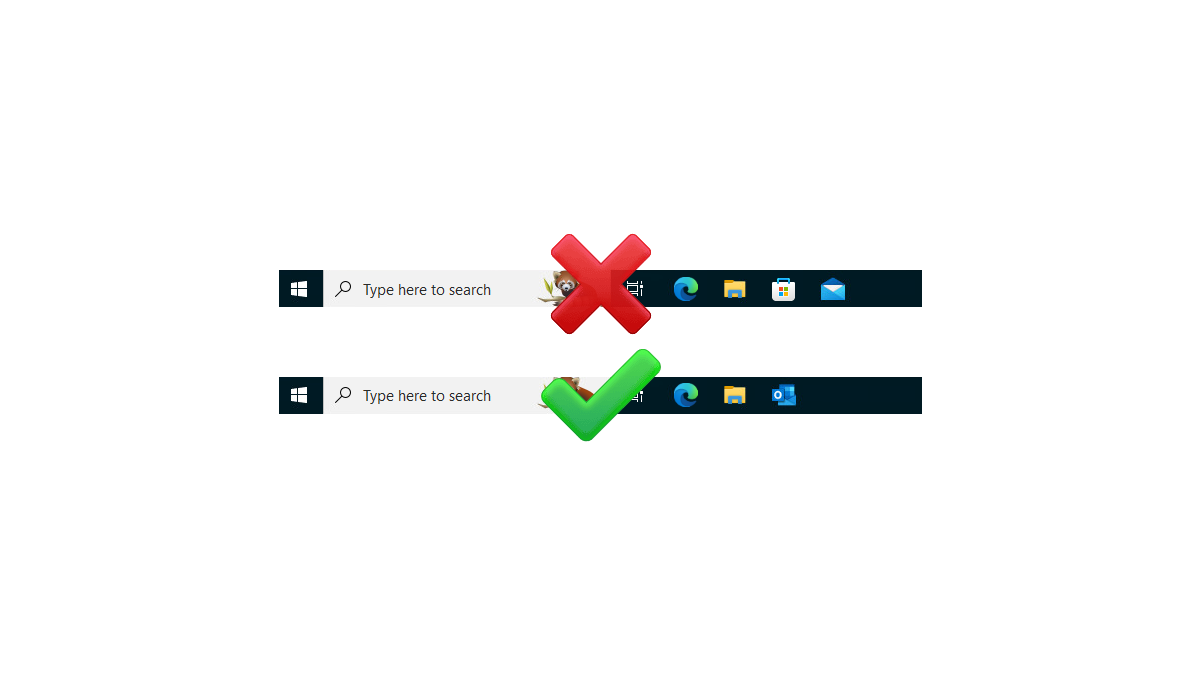
Update
The process detailed below works perfectly on Windows 11 however, on Windows 10 the process below will lock the Start Menu layout preventing users from being able to pin anything to the Windows 10 Start Menu or change anything in the Start Menu. The process to fix this is to also deploy a default Windows 10 Start Menu the process for the fix is detailed in my post Intune Deploy Windows 10 Default Start Menu.
Deploying the same taskbar to all users is a very nice quality of life improvement, as it can help eliminate the problems of users using Windows Mail instead of the already installed Microsoft Outlook.
I opted to deploy a standard default taskbar using Microsoft Intune as Microsoft Office is a required application on all Intune systems in my setup so I didn’t need to worry about a system trying to pin Microsoft Outlook when it wasn’t installed.
In this post, I’ll show you step-by-step how to create the taskbar XML file and how to deploy it to Windows 10 and Windows 11 using Microsoft Intune.
Create the XML
- Copy the example taskbar XML below or copy it from Microsoft here.
<?xml version="1.0" encoding="utf-8"?>
<LayoutModificationTemplate
xmlns="http://schemas.microsoft.com/Start/2014/LayoutModification"
xmlns:defaultlayout="http://schemas.microsoft.com/Start/2014/FullDefaultLayout"
xmlns:start="http://schemas.microsoft.com/Start/2014/StartLayout"
xmlns:taskbar="http://schemas.microsoft.com/Start/2014/TaskbarLayout"
Version="1">
<CustomTaskbarLayoutCollection>
<defaultlayout:TaskbarLayout>
<taskbar:TaskbarPinList>
<taskbar:UWA AppUserModelID="Microsoft.MicrosoftEdge_8wekyb3d8bbwe!MicrosoftEdge" />
<taskbar:DesktopApp DesktopApplicationLinkPath="%APPDATA%\Microsoft\Windows\Start Menu\Programs\System Tools\File Explorer.lnk" />
</taskbar:TaskbarPinList>
</defaultlayout:TaskbarLayout>
</CustomTaskbarLayoutCollection>
</LayoutModificationTemplate>
Code language: HTML, XML (xml)We will need to make some changes as it isn’t perfect. We will start by telling Windows to unpin all the default pinned apps.
- To remove all the default pinned apps we need to change
<CustomTaskbarLayoutCollection>to be<CustomTaskbarLayoutCollection PinListPlacement="Replace">
Even though we configure the taskbar XML to replace the default pinned apps this has no impact on the apps the user has pinned, it may move the items to the start of the taskbar if they have them pinned further down but that’s it.
Now we can start adding the pinned apps we want. I like to have Edge, File Explorer, and Outlook pinned.
- For Microsoft Edge all the work is done for us already.
- For File Explorer we shouldn’t use the
DesktopApplicationLinkPathas that won’t be compatible for both Windows 10 and Windows 11 as the shortcut path is not the same in Windows 10 and Windows 11. To solve this we will use theDesktopApplicationIDinstead.
For the File Explorer pin to compatible with Windows 11 and Windows 10 we need to replace<taskbar:DesktopApp DesktopApplicationLinkPath="%APPDATA%\Microsoft\Windows\Start Menu\Programs\System Tools\File Explorer.lnk" /> with <taskbar:DesktopApp DesktopApplicationID="Microsoft.Windows.Explorer" />.
- For Microsoft Outlook we will add the following
<taskbar:DesktopApp DesktopApplicationID="Microsoft.Office.OUTLOOK.EXE.15" />
We now have a modified taskbar XML file that looks like this
<?xml version="1.0" encoding="utf-8"?>
<LayoutModificationTemplate
xmlns="http://schemas.microsoft.com/Start/2014/LayoutModification"
xmlns:defaultlayout="http://schemas.microsoft.com/Start/2014/FullDefaultLayout"
xmlns:start="http://schemas.microsoft.com/Start/2014/StartLayout"
xmlns:taskbar="http://schemas.microsoft.com/Start/2014/TaskbarLayout"
Version="1">
<CustomTaskbarLayoutCollection PinListPlacement="Replace">
<defaultlayout:TaskbarLayout>
<taskbar:TaskbarPinList>
<taskbar:UWA AppUserModelID="Microsoft.MicrosoftEdge_8wekyb3d8bbwe!MicrosoftEdge" />
<taskbar:DesktopApp DesktopApplicationID="Microsoft.Windows.Explorer" />
<taskbar:DesktopApp DesktopApplicationID="Microsoft.Office.OUTLOOK.EXE.15" />
</taskbar:TaskbarPinList>
</defaultlayout:TaskbarLayout>
</CustomTaskbarLayoutCollection>
</LayoutModificationTemplate>
Code language: HTML, XML (xml)If you wanted to add anything else you can keep adding to it.
Start Menu shortcuts can be found in the following locations. If the shortcut is user profile specific it would show up in %APPDATA%\Microsoft\Windows\Start Menu\Programs if the program is system wide the shortcut would show up in %ALLUSERSPROFILE%\Microsoft\Windows\Start Menu\Programs
- Once you are all done save the file as an XML file. I’m going to call mine taskbar.xml
Intune Settings
Now we need to configure Intune to deploy the custom taskbar.
- Login to Microsoft Intune admin center
- Click on Devices
- Click on Configuration profiles
- Click on Create profile
- Set the Platform as Windows 10 and later and set the Profile type as Templates and select Device restrictions
- Give your Profile a name. I’m going to call mine Default Taskbar Configuration Profile
- Under Start upload the XML file you created earlier.
- Select your Assignments
In my setup, I’m going to use the same groups that are used to target the Microsoft Office install which happens when the device is onboarded to Intune so I don’t need to worry about Microsoft Outlook not being installed.
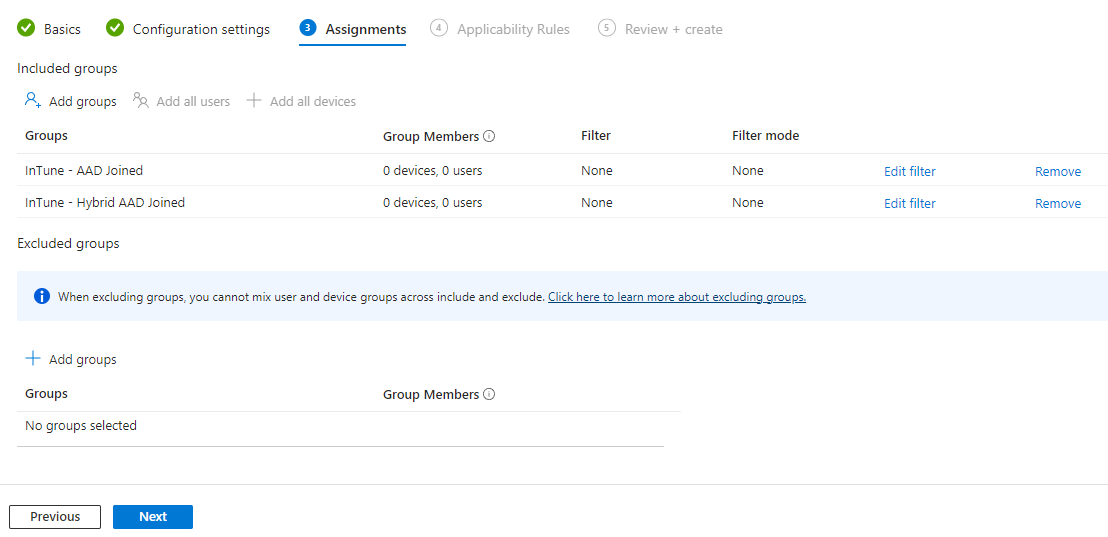
- Set your Applicability Rules if applicable
- Review the draft Default Taskbar Configuration Profile if all looks good click Create
- Now the taskbar will start deploying to the systems you targeted.
That’s all it takes to deploy a standard taskbar as the default taskbar for all users by using Microsoft Intune.
If you want to read more about configuring taskbar settings you can do so by reading the Microsoft documentation here.
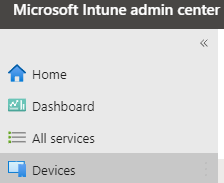
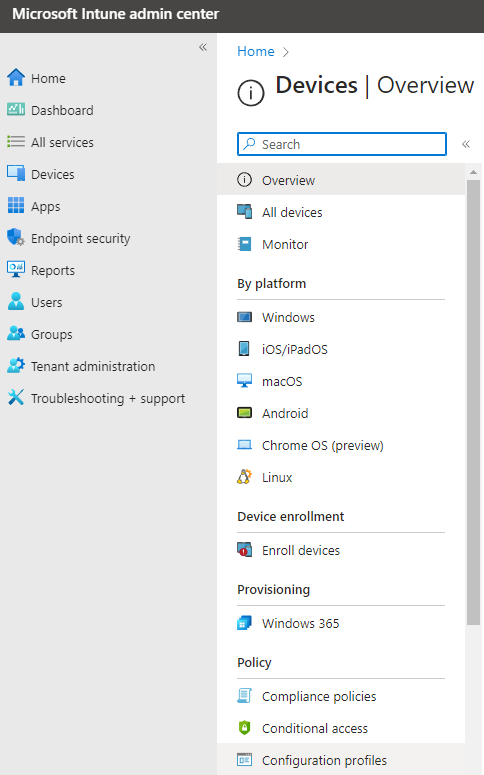
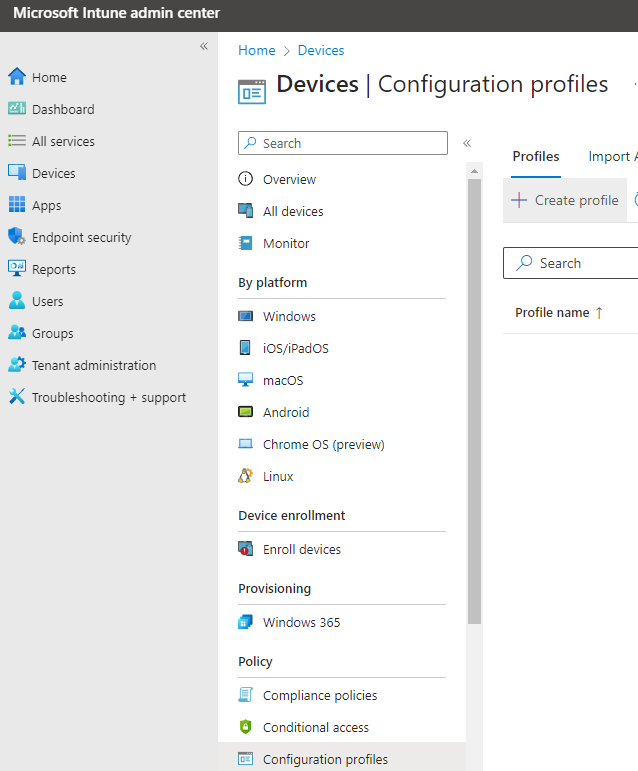
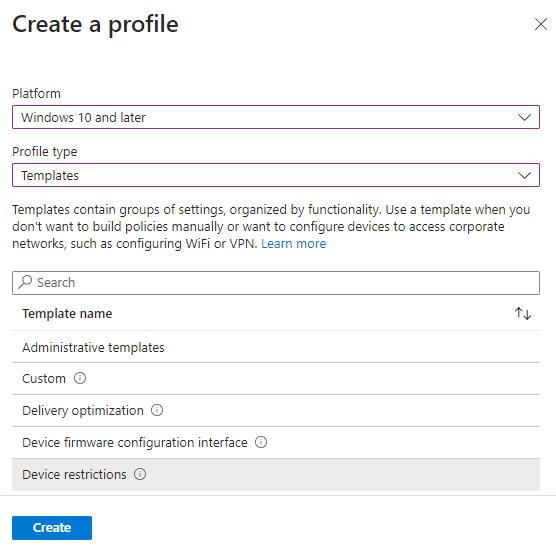
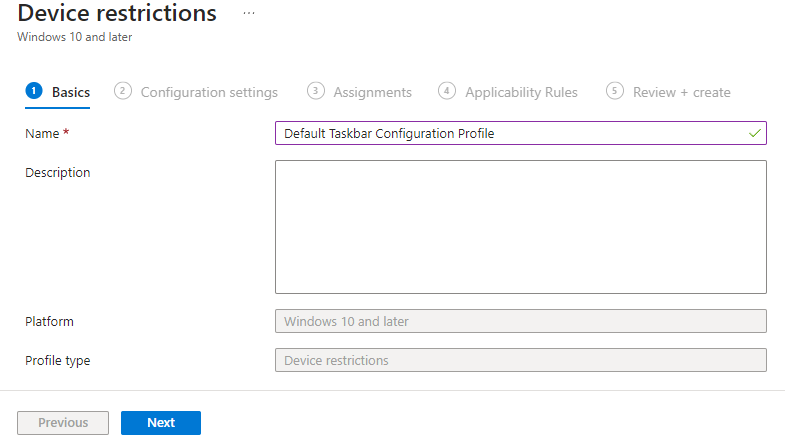
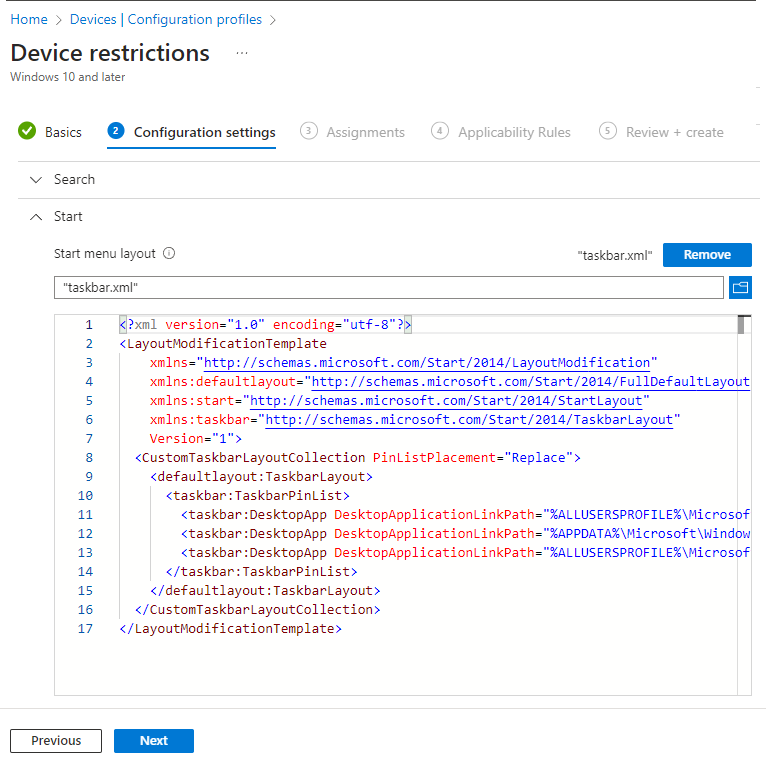
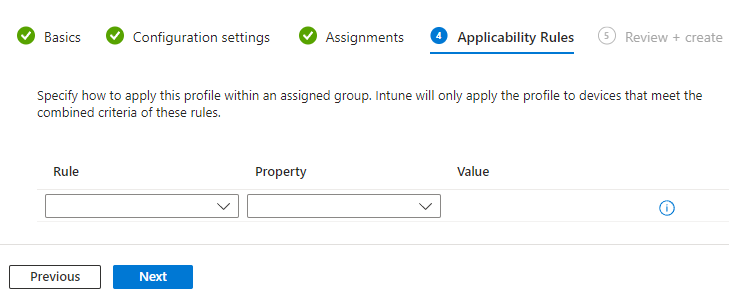
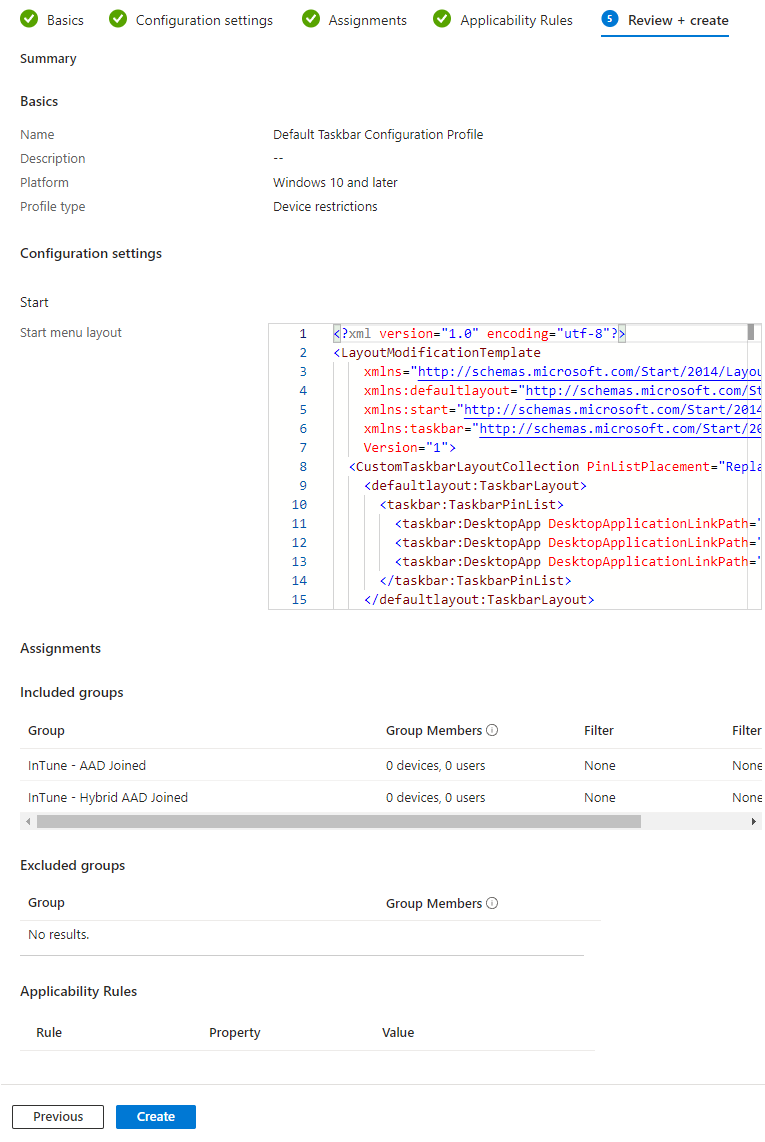
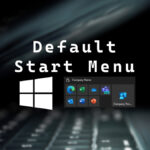
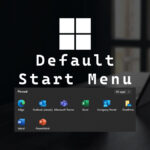

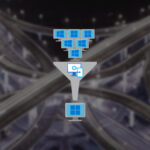






6 responses to “Intune Deploy Default Taskbar”
Hi,
Appreciate you documenting the process here!
I’m having trouble finding apps in the location specified likely because they aren’t in the Start Menu by default, if I go to either:
%APPDATA%\Microsoft\Windows\Start Menu\Programs
OR
%ALLUSERSPROFILE%\Microsoft\Windows\Start Menu\Programs
I’m not finding Teams (new), Outlook (new), or the Camera App – all of which we’d like to Pin to taskbar in addition to Edge and File Explorer. Those are a little more straight forward as the shortcuts already exist in the folders above.
In total, we would like to have File Explorer, Microsoft Edge, Outlook (New), Teams (New), Camera, as well as TeamViewer client all pinned on the taskbar – the last 4 are the ones I’m struggling with so any help would be appreciated.
Thanks!
Thank you.
Those are modern apps and they don’t create shortcuts the same ways as before.
There are a few tricks to figure out what the new shortcuts would be. The easiest is to pin them to the Start Menu in Windows 11 or Windows 10. Here’s how to that for Windows 10 and here’s how to do that for Windows 11
In Windows 11 you can also run the command
Get-StartAppsthis will give you the AppIDs. If you use the AppID it should work.This is what should work
taskbar:UWA AppUserModelID="Microsoft.OutlookForWindows_8wekyb3d8bbwe!Microsoft.OutlookforWindows"taskbar:UWA AppUserModelID="Microsoft.WindowsCamera_8wekyb3d8bbwe!App"
taskbar:UWA AppUserModelID="MSTeams_8wekyb3d8bbwe!MSTeams"
I don’t have TeamViewer installed but if you use the AppID for it you should be good to go.
This site helped me find the new locations – it seems they aren’t adding the shortcuts to the paths above anymore regarding Start Menu\Programs folder… another pivot it seems.
https://www.reddit.com/r/Office365/comments/17ar373/new_outlook_new_teams_exe_location/
Any ideas on the best way to implement taskbar icons for apps that are constantly going to change folders based on the version?
i.e. C:\Program Files\WindowsApps\MSTeams_24243.1309.3132.617_x64__8wekyb3d8bbwe
Thanks!
You are correct that it will break as it gets updated. If you use the App ID you should be good to go. (see my other reply for more info)
I’m using the App ID for the Start Menu on Windows 10 and Windows 11 and it’s been rock solid.